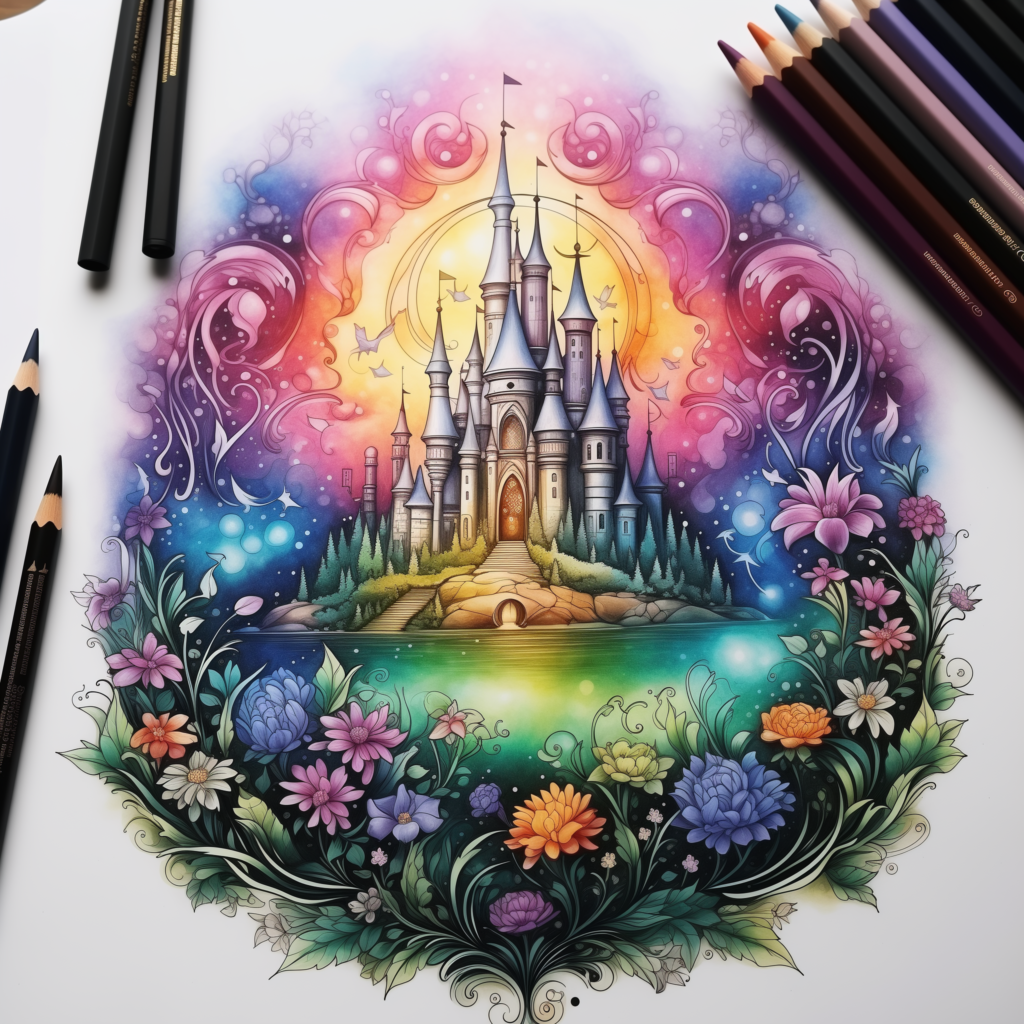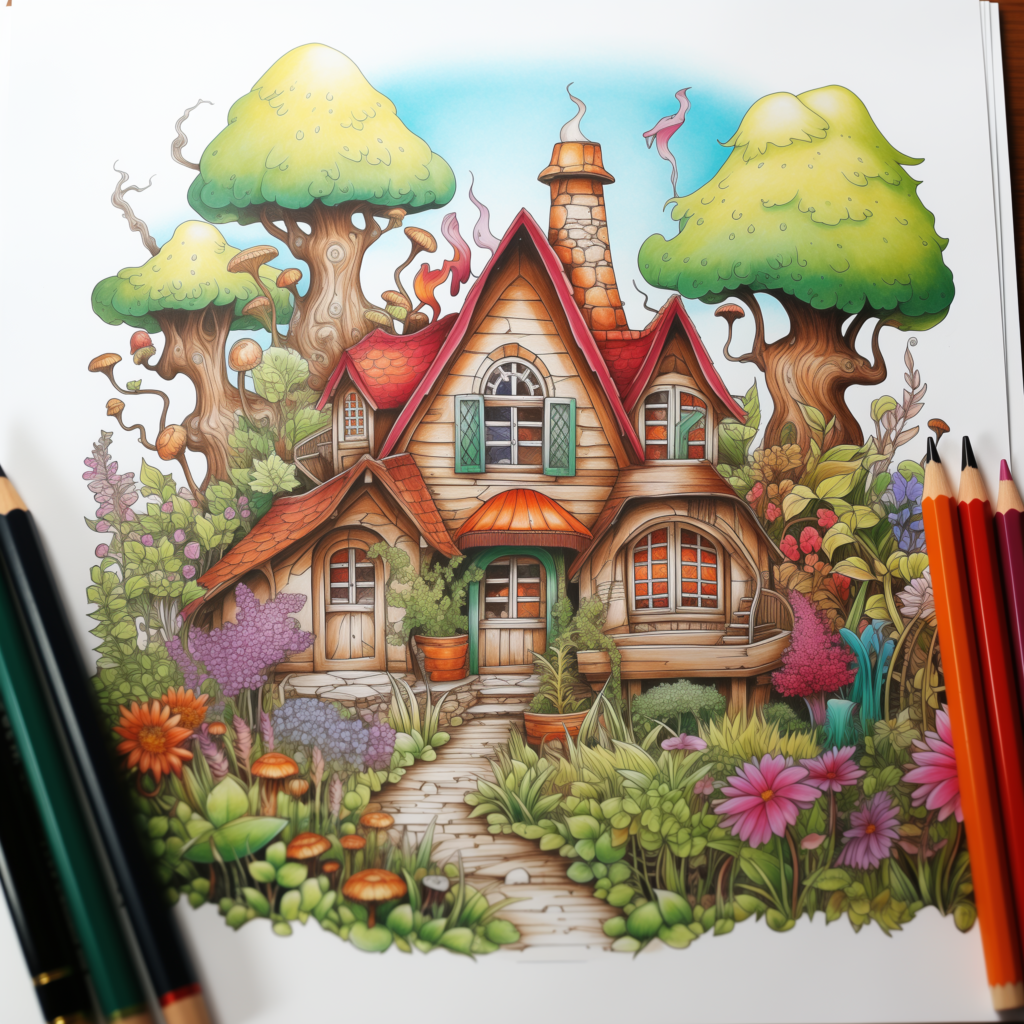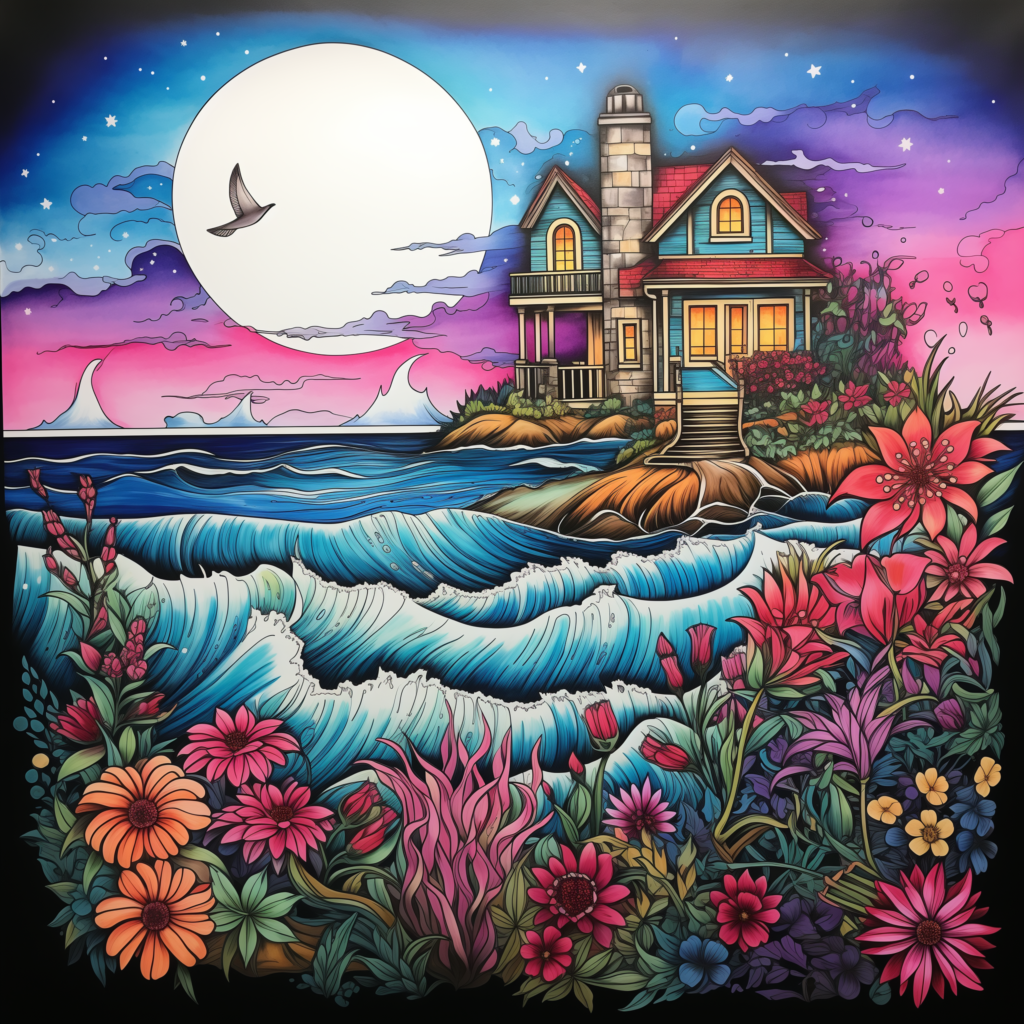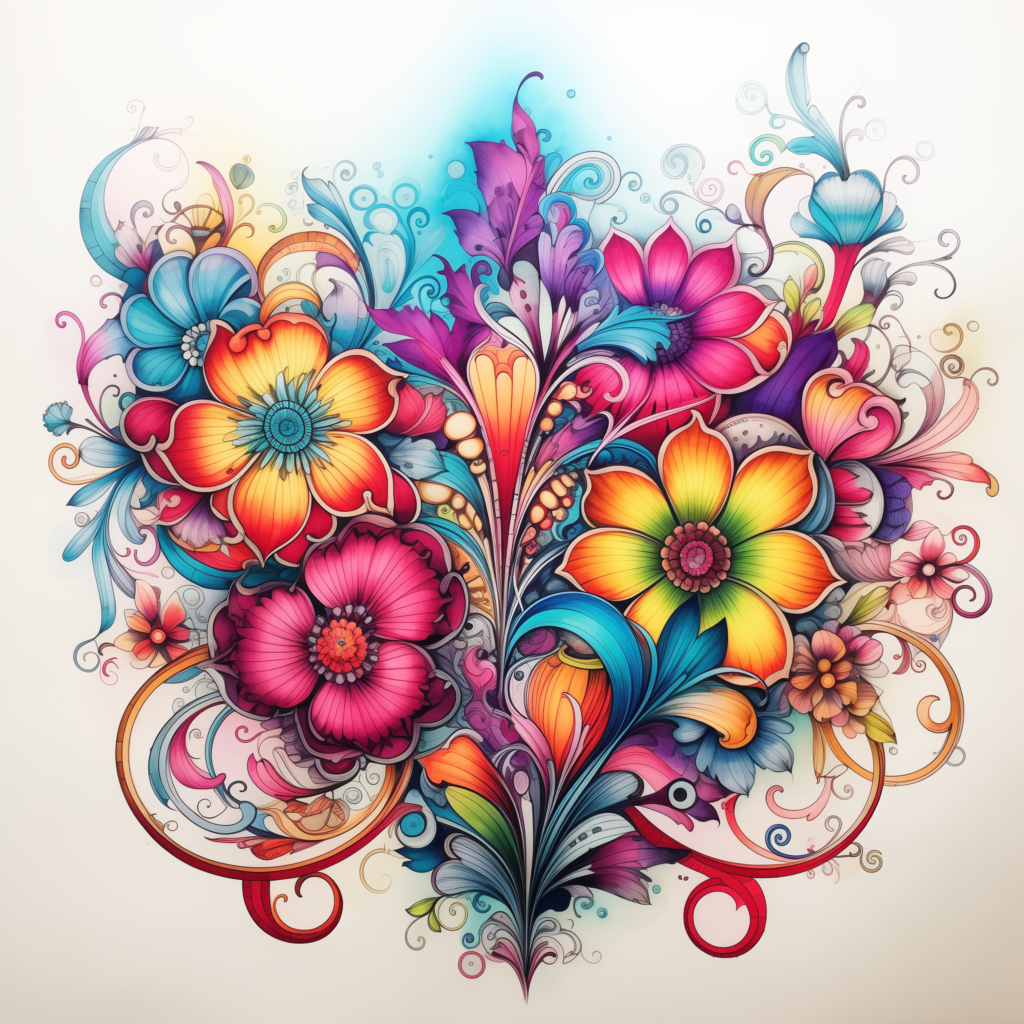Adult coloring has surged in popularity over the past few years, and it’s easy to see why. Whether you’re looking to relax after a long day, explore your creative side, or simply pass the time in a fun and fulfilling way, adult coloring offers a perfect outlet. In this guide, we’ll explore some of the best adult coloring techniques for beginners, helping you to start your journey with confidence and style.
Table of Contents

Why Adult Coloring Is a Great Hobby
First things first—why should you consider adult coloring as a hobby? Beyond the simple joy of adding color to intricate designs, adult coloring has a range of benefits that make it more than just a fun pastime.
Coloring has been shown to have mental health benefits, particularly when it comes to reducing stress and anxiety. When you focus on coloring, your mind is diverted from worries, allowing you to relax and unwind. It’s like meditation but with more colors!
Additionally, adult coloring can improve your focus and mindfulness. The intricate patterns and designs require attention to detail, helping you to stay in the moment and clear your mind of distractions. Plus, the creative aspect of coloring allows you to express yourself in ways that might not be possible through words or other activities.

Choosing the Right Coloring Tools
One of the first steps in adult coloring is choosing the right tools. The right set of tools can make a significant difference in your coloring experience, particularly if you’re just starting out. Here’s a breakdown of the most popular options:
Colored Pencils
Colored pencils are a staple in adult coloring. They offer precision and control, making them ideal for filling in detailed patterns. When selecting colored pencils, you’ll come across two main types: wax-based and oil-based.
- Wax-based Colored Pencils: These are the most common and are generally easier to blend. However, they can sometimes leave a waxy residue on the paper.
- Oil-based Colored Pencils: These are often favored by more experienced colorists because they blend smoothly and don’t leave a residue, but they can be harder to erase.
Some of the best brands for beginners include Prismacolor Premier (wax-based) and Faber-Castell Polychromos (oil-based). These pencils are known for their quality, vibrant colors, and ease of use.

Markers
Markers are another popular option, especially for those who prefer bold, vibrant colors. However, choosing the right type of marker is crucial to avoid common issues like bleeding through the paper.
- Alcohol-based Markers: These markers are known for their vibrant colors and smooth application but are prone to bleeding through thin paper. If you use alcohol-based markers, it’s a good idea to place a protective sheet under the page you’re working on.
- Water-based Markers: These are less likely to bleed through the paper and are easier to control, making them a better option for beginners.
Brands like Copic and Tombow offer high-quality markers that are perfect for adult coloring.
Gel Pens
Gel pens add a touch of sparkle and detail to your coloring pages. They’re perfect for accenting areas with metallic, glitter, or neon effects. The smooth ink flow of gel pens makes them easy to use, though they can take a bit longer to dry.
When using gel pens, it’s best to work slowly and allow the ink to dry before moving on to avoid smudging. Sakura Gelly Roll pens are a popular choice among adult colorists.
Watercolor Pencils
Watercolor pencils offer a unique way to add a painterly effect to your coloring. They function like regular colored pencils but can be activated with water to create a soft, watercolor look.
To use watercolor pencils effectively, start by coloring lightly, then use a damp brush to blend the colors. This technique can create beautiful, soft transitions between colors, adding depth and interest to your coloring pages.

Understanding Different Coloring Books
Choosing the right coloring book is just as important as selecting your tools. The variety of adult coloring books available is vast, catering to all tastes and skill levels.
Intricate Designs vs. Simpler Patterns
When you’re just starting, it’s essential to pick a coloring book that matches your skill level. Intricate designs with small, detailed patterns can be more challenging but also more rewarding. On the other hand, simpler patterns might be less overwhelming for beginners and can help you practice your coloring techniques.
Themed Coloring Books
Themed coloring books are a fun way to indulge in your interests while coloring. Popular themes include nature scenes, mandalas, and abstract art. If you have a particular interest, there’s likely a coloring book out there that caters to it, whether you’re into animals, flowers, or fantasy worlds.
Basic Coloring Techniques
Now that you’ve got your tools and book, it’s time to dive into some basic coloring techniques that will help you create beautiful, polished pieces.
Layering and Blending
One of the foundational techniques in adult coloring is layering. By applying multiple layers of color, you can create depth and a more vibrant finish. Start with a light hand and gradually build up the color, using circular motions to avoid harsh lines.
Blending is another essential skill, especially if you’re using colored pencils. To blend colors smoothly, overlap the edges of different shades and apply gentle pressure. You can also use a blending pencil or a cotton swab to smooth out the transitions between colors.
Shading
Shading adds dimension to your coloring, making your work appear more realistic. To shade effectively, consider the light source in your picture. Darken the areas where shadows would naturally fall and lighten the areas where light would hit. This technique is particularly effective in making objects look three-dimensional.
Gradient Effects
Creating gradients, or smooth transitions between colors, can make your coloring pages stand out. Start by applying the lighter color and gradually introduce the darker shade, blending as you go. This technique works well with all mediums, from colored pencils to markers.
Advanced Techniques for Adding Texture
Once you’ve mastered the basics, you might want to experiment with more advanced techniques that add texture and interest to your coloring.
Cross-Hatching
Cross-hatching involves drawing intersecting lines to create texture and shading. This technique is excellent for adding depth and dimension to your work, particularly in areas that require a bit of roughness or detail.
Stippling
Stippling is a technique that uses small dots to build up color and texture. This method requires patience but can be very effective in creating a unique, textured look. Stippling works particularly well in areas where you want to mimic natural textures, like the bark of a tree or the surface of a rock.

Burnishing
Burnishing is a technique used to create a smooth, glossy finish with colored pencils. After layering your colors, apply heavy pressure with a light-colored pencil or a blending pencil to smooth out any graininess. This technique is excellent for achieving a polished, professional look in your coloring.
Combining Mediums for Unique Effects
For those looking to take their coloring to the next level, combining different mediums can create stunning effects that make your work truly unique.
Mixing Colored Pencils with Markers
Colored pencils and markers can complement each other beautifully. Use markers to lay down a base layer of vibrant color, and then go over it with colored pencils to add shading, details, and texture. This combination allows for bold, bright backgrounds with detailed, intricate focal points.
Using Gel Pens Over Colored Pencils
Gel pens are perfect for adding finishing touches and details over colored pencil work. The smooth, shiny finish of gel pens contrasts nicely with the matte look of colored pencils, creating a striking effect. Use gel pens to highlight specific areas, add borders, or incorporate metallic accents.
Incorporating Watercolors
For a soft, ethereal look, consider using watercolors as a base layer. Once the watercolor has dried, you can go over it with colored pencils or markers to add details and shading. This technique is especially effective in creating backgrounds or large, open spaces in your coloring book.
Tips for Staying Motivated
Like any hobby, it’s easy to lose motivation if you’re not seeing the progress you’d like. Here are some tips to keep you inspired:
- Set Realistic Goals: Don’t pressure yourself to finish a page in one sitting. Take your time and enjoy the process.
- Join Online Communities: Social media is full of coloring groups where you can share your work, get feedback, and find inspiration from others.
- Keep a Coloring Journal: Document your progress by keeping a journal of your completed pages. This can help you see how much you’ve improved over time and keep you motivated to continue.
Conclusion
Adult coloring is a relaxing, enjoyable hobby that offers numerous mental and creative benefits. By starting with the right tools and techniques, you can create beautiful, intricate works of art, no matter your skill level. Remember, the key is to take your time, experiment with different methods, and most importantly, have fun with it. Happy coloring!